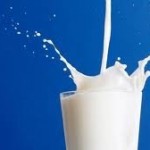Kate Arnold Nutrition

Archive: Apr 2012
-
-
Can you eat your way to better sight?
Leave a Comment -
Loving Shelina and her obsession for mangoes!
Leave a Comment
MasterChef winner: my obsession with mangoesI can recommend a great mango sorbet by Rookbeare – I find it in the freezer section of Waitrose. Fantastic ingredients!
-
Stressful times
Leave a Comment
Anxiety: a very modern malaiseTimes are stressful for many of us. This is also the time however to make sure your health is being supported by great nutrition, stable blood sugar and good levels of B vitamins and magnesium. If you would like some help or advice with this please contact me.
-
The fabulous Elizabeth David
Leave a Comment -
Wartime Nutrition 1943
Leave a Comment -
Just in case you forgot…..
Leave a CommentThis incredible lecture by Dr Robert Lustig on sugar. This is everything you need to know about obesity and politics in one shot.
Someone give him a global knighthood
-
April newsletter – Everything you need to know about lactose intolerance
Leave a Comment As some of you are aware I was diagnosed as lactose intolerant about 17 years ago. It took six years to get a diagnosis in the days when I knew nothing of nutrition and health! In the last ten years I’ve seen a surge of lactose and fructose intolerance patients that are mistakingly diagnosed with IBS. Without the proper test, diagnosis, treatment or diet strategy, the symptoms wont necessarily go away. I suspect many people diagnosing themselves with “allergies to dairy” could in part be lactose intolerant. To understand what exactly is going on we need to look a bit deeper as many of you are confused! One thing is for sure try not to diagnose yourself as this area is a minefield of mis-information.
As some of you are aware I was diagnosed as lactose intolerant about 17 years ago. It took six years to get a diagnosis in the days when I knew nothing of nutrition and health! In the last ten years I’ve seen a surge of lactose and fructose intolerance patients that are mistakingly diagnosed with IBS. Without the proper test, diagnosis, treatment or diet strategy, the symptoms wont necessarily go away. I suspect many people diagnosing themselves with “allergies to dairy” could in part be lactose intolerant. To understand what exactly is going on we need to look a bit deeper as many of you are confused! One thing is for sure try not to diagnose yourself as this area is a minefield of mis-information. What is Lactose intolerance?
The ancient Greek physician Hippocrates (born 460 B.C.) first noted gastrointestinal upset and skin problems in some people who consumed milk. However, it has only been in the last few decades that the syndrome has been more widely described by modern medicine. Lactose intolerance is the inability to metabolize the sugar found in milk and dairy products. This is due to a lack of the enzyme lactase. Most adults in northern Europe and North America are able to absorb lactose. However, the majority of the world’s population are lactose intolerant, and as we get older our ability to digest lactose lessens. Globally a staggering 70 per cent of adults are lactose-intolerant (Gastroenterology, 1971; 61: 805-13).
Babies’ bodies make lactase so they can digest milk, including breast milk. Premature babies sometimes have lactose intolerance. Children who were born at full term usually do not show signs of lactose intolerance until they are at least 3 years old. Lactose intolerance can begin at different times in life. In Caucasians, it usually affects children older than 5 yrs old. In African Americans, lactose intolerance often occurs as early as 2 yrs old. Lactose intolerance is more common in people with Asian, African, Native American, or Mediterranean ancestry than it is among northern and western Europeans. Approximately 30 million American adults have some amount of lactose intolerance by 20 yrs old.
What are the symptoms?
Without lactase, lactose cannot pass through the gut wall into the bloodstream. This accumulation of undigested sugar causes gut bacteria to switch to lactose metabolism, resulting in abdominal symptoms such bloating, flatulence, cramps and, sometimes, diarrhoea. Symptoms often occur 30 minutes to 2 hours after you eat or drink milk products.Causes
Bowel surgery
Infections in the small intestine from viruses or bacteria which may damage the cells lining the intestine
Intestinal disorders like coeliac disease
Children weaned in non diary consuming societies
A genetic disorder from birth – usually diagnosed in early infancy
Lactose tolerance testsYou can simply avoid eating foods that contain lactose for a couple of days and then drink two to three glasses of milk. If you get stomach ache or diarrhoea within half an hour, you might be lactose intolerant. If you would like it confirmed than the tests available are:
 The lactose tolerance test.
The lactose tolerance test.
Your doctor/consultant measures your blood sugar levels before and after you drink a liquid containing lactose. The lactose tolerance blood test looks for glucose in your blood. Your body creates glucose when lactose breaks down. For this test, several blood samples will be taken before and after you drink the lactose solution described above.Stool ph.
If the stool is acidic this can inidcate an infection of e. coli or lactose intolerance. This is done with children born with the condition.The hydrogen breath test
This is the preferred method. It measures the amount of hydrogen in the air you breathe out. You will be asked to breathe into a balloon-type container, or gastrolyzer. Then, you will be asked to drink a liquid containing lactose. Samples of your breath are collected at set time periods and the hydrogen level is checked. Normally, very little hydrogen is in your breath. But if your body has trouble breaking down and absorbing lactose, breath hydrogen levels increase. There can be issues with getting this test on the NHS as it’s quite expensive and it won’t necessarily be the first test your GP will use to diagnose your symptoms.If you’re having problems getting this test in your area, I’ve teamed up with Dr Adam Harris, Consultant Gastroenterologist who does breath tests including lactose, fructose and SIBO. For more details go to his website: www.westkentgastroenterology.com.
Where do I find lactose?
Lactose is also a commercial food additive used for its texture, flavour and adhesive qualities, and is found in foods such as processed meat, sausages, sliced meats, pates, gravy stock powder, margarines, sliced breads, breakfast cereals, processed foods, medications, pre-prepared meals, meal replacements (powders and bars), and protein supplements (powders and bars). A comprehensive list includes all these ingredients:
Avoid
Butter
Butter Oil
Calcium caseinate
Casein
Cheese
Cream
Demineralised whey
Lactalbumin
Milk powder
Skimmed milk powder
Milk solids
Non fat milk
Non fat milk solids
Sodium caseinate
Sweet whey powder
Whey
Whey protein concentrate
Whey Solids
Ammonium caseinate
Caramel colouring
Caramel flavouring
Dried milk
Dried milk solids
Hydrolysed casein
Hydrolysed milk protein
Lactoferrin
Magnesium casein ate
Potassium casein ate
Rennet caseinNB: nearly all prescription medication has lactose in from senna tablets to painkillers. If you are lactose intolerant and are needing daily medication its worth talking to your GP or pharmacist and see if there is another option.
C
 an I supplement with Lactase?
an I supplement with Lactase?
When lactose avoidance is not possible, or on occasions when a person chooses to consume such items, then lactase supplements may be used. Lactase enzymes similar to those produced in the small intestines of humans are produced industrially. The enzyme, β-galactosidase, is available in tablet form in a variety of doses, without a prescription. Unfortunately, too much acid can denature it, so it needs to be taken on an empty stomach. Lactase supplementation may have an advantage especially in children where the avoidance of all dairy food might be difficult. However personally for me, I’ve never found this affective in adults although this is about personal choice and what works for you.So what’s Casein?
Casein (from Latin caseus “cheese”) is the predominant phosphoprotein in dairy food and accounts for nearly 80% of proteins in cow milk and cheese. It has been documented to break down to produce the peptide casomorphin, an opioid that appears to act primarily as a histamine releaser. One theory is that this casomorphine aggravates the symptoms of autism. Autism is complicated and is never caused simply by one problem but generally parents feel their children respond better to a casein free diet. As casein has a molecular structure that is quite similar to that of gluten, some gluten-free diets are combined with casein-free diets. Casein is often listed as sodium caseinate, calcium caseinate or milk protein. These are often found in energy bars, drinks as well as packaged goods.
What can I eat?
If you cannot eat dairy food for whatever reason you will need to look for alternatives. Twenty years ago it was difficult finding substitutes to milk products but now all supermarkets stock a good range of soya products – go to www. alprosoya.co.uk.
Soya products are low in cholesterol, trans fat and high in omega 3, 6, and 9 and help lower serum cholesterol. Rice dream and oat milk are also available in some supermarkets and health food shops if you don’t like the taste of soya. Goat, sheep and buffalo products can sometimes be tolerated better than cows milk, however please note they still contain lactose – many of you are getting confused and thinking it’s just cows milk – its not!. Lactose free milk, yoghurt and cheese are now widely available – go to www.lactofree.co.uk for more information.Most people with low lactase levels can drink 2 – 4 ounces of milk at one time (up to one-half cup) without having symptoms. Larger (more than 8 oz.) servings may cause problems for people with lactase deficiency. However as its so individual it will differ from person to person – I can eat organic butter and feta cheese – I’ve no idea why but I can and that makes life a lot easier for me!
These milk products may be easier to digest
Buttermilk
Fermented milk products, such as yogurt (particularly organic ” live” yogurt)
Goat’s milk
Ice cream, milkshakes, and aged or hard cheeses
Lactose-free milk and milk products
Soy formulas for infants younger than 2 years
Soy or rice milk for toddlersIf for whatever reason you are omitting dairy foods from your diet you will need other sources of calcium, so i you use soyal milk, do choose the calcium enriched soya milk. In order of greatest first here are some calcium rich foods to incorporate into your diet. You need 1,200 – 1,500 mg of calcium each day:
 Calcium sources:
Calcium sources:
Whitebait
Canned sardines
Tofu
Black beans
Pinto beans
Spring greens
Molasses
Raw spinach
Sesame seeds
Prawns
Baked beans
Canned pilchards
Chickpeas
Shrimps
Canned salmon
Almonds -
How do we live to 100?
Leave a CommentPlease read this great article by Max Pemberton about getting to 100….below is a section of the article on famous people seeing out their century. http://www.telegraph.co.uk/health/wellbeing/9179398/What-are-the-chances-this-baby-will-live-to-100.html
 Lovers of life
Lovers of life Wisecracking comedian Bob Hope reached the 100 mark in 2003, and died a few weeks later. “I’m so old, they cancelled my blood type,” he once joked. The British-born star was as physically active as he was quick-tongued. A voracious womaniser, Hope was also a fanatical golfer, playing well into his nineties. Whatever his secret, it was clearly infectious. His wife Dolores lived to 102.
The late Queen Elizabeth, who lived to 101, cheerfully broke the medical rules, consuming, according to some estimates, 70 units of alcohol a week – five times the recommended number for a woman. Her favourite tipples included gin, Dubonnet, claret and champagne. She was famous for her sense of mischief, led a busy social life, and relaxed by reading PG Wodehouse novels.
The oldest centenarian whose birth date has been reliably documented was a Frenchwoman, Jeanne Calment, who died in 1997 at the age of 122 (and therefore qualifies as one of the world’s few supercentenarians – people who have lived beyond the age of 110). She attributed her own longevity to the copious amounts of olive oil she poured on her food. She kept active and cycled into her nineties, but also had her fair share of vices. She drank port, consumed a kilogram of chocolate a week, and smoked, in moderation, until she was 117.
One centenarian who gleefully confounded medical opinion was the American comedian George Burns, who died in 1996, shortly after his 100th birthday. Burns smoked between 10 and 15 of his trademark cigars a day, often accompanied by a martini. He dedicated one of his books to “the widows of my last six doctors”.
Creatures of habit
Christian Mortensen, who died in California in 1998 aged 115, summed up the secrets of his longevity as “friends, a good cigar, drinking lots of good water, no alcohol, staying positive and lots of singing”. A former milkman and factory worker, he had a mainly vegetarian diet and boiled all his water.
The Japanese centenarian Tane Ikai had a diet of stultifying monotony that would have tried the patience of a saint. On a typical day, she ate three meals of rice porridge. But it did the trick. Ikai pegged out in 1995, at the age of 116.
Great-great-grandmother Ada Marley, from Oxfordshire, who turned 100 in January, combines an abstemious lifestyle with an active mind: “I have never smoked or drunk, but I have kept myself busy with things like needlework and embroidery.” She keeps herself mentally alert by doing a crossword or word puzzle every day.
Minnesota railway clerk Walter Breuning, who died in 2011 at the age of 114, practised callisthenics (a type of exercise to increase body strength) daily almost until his death. His diet consisted of a large breakfast followed by smaller meals later in the day. In old age, he skipped his evening meal altogether and ate fruit instead.
Natural-born survivors
The German film-maker Leni Riefenstahl, notorious for her Nazi propaganda films in the Thirties, was also renowned for her stamina and physical resilience. She survived a helicopter crash at the age of 100, and was still a keen scuba-diver when she died in 2003, at the age of 101.
One of the last survivors of the First World War, Henry Allingham was briefly the oldest man in the world before his death in 2009, at the age of 113. As well as witnessing the horrors of war, he suffered two nervous breakdowns, but he remained upbeat. He jokingly attributed his longevity to “cigarettes, whisky and wild, wild women”.
Another man to weather an inauspicious start in life was the songwriter Irving Berlin, whose family fled Russia during the pogroms of the late 19th century. The composer of White Christmas was a workaholic, often making do with very little sleep, and was prone to bouts of depression; but he passed the century mark in 1988, shortly before his death
So can we make any conclusions about living to see 100. Its clearly multifactorial: great genes, a diet high in good oils, a great outlook, positive mental attitude and perhaps also hard work and keeping the brain active. Your thoughts and stories on people you know you have reached this age?My grandmother lived to 98 and my grandfather 96. My grandmother wasnt a worrier – she thought it a waste of time, she had a very good sense of humour, worked incredibly hard bringing up three children with little money. She was active, drank guinness, ate watercress, cranberry juice and free range eggs. As far as I can remember she only an underactive thyroid. The link to those that live to that great age – well they seem to aspire to a great mental attitude as much as possible, alcohol, and having fun… perhaps I’m in the wrong job! and here’s Des – amazing at 80!
http://www.dailymail.co.uk/tvshowbiz/article-2124281/Des-Ive-drunk-1952.html





